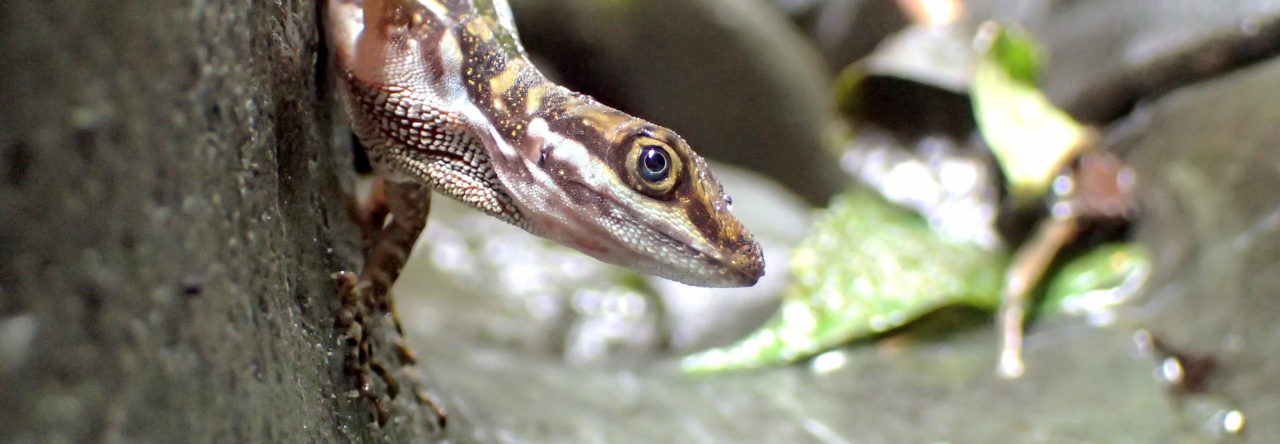West Indian photographer and natural historian extraordinaire Father Alejandro Sanchez sent in these photos, commenting “I took these two pics less than 10 seconds apart from each other – the time it took for me to modify the flash’s settings. Yet the lizard noticeably changed color patters in such a short time, surely for being scared by my proximity. Anolis gundlachi is one of my favorites.”
And note those blue eyes!
Latest posts by Jonathan Losos (see all)
- Evolution in Real Time on Lizard Island - March 23, 2025
- Spider Snags Adult Anolis osa - March 22, 2025
- An Homage to the Green Anoles of New Orleans - March 21, 2025




James (Skip) Lazell
Nifty: thanks, Padre! Miss seeing you, Skip
Alejandro Sanchez
Thanks, Skip. Hopefully we’ll see each other again in the near future.
Alejandro
Reynold Boyce
I clicked this message onto Donotreply a few days ago without respose. So I am trying here even though I fear the necessary documentation & the 2 images may not fit.
I have been photodocumenting Anolis aeneus & A. richardii in Grenada a few years now. But this year I came across these two specimens that look really different from either. Disbelieving that a colour/pattern change of either species could be so drastic I consulted the local Anolis authority at UWI.
We both think they represent an invasive species. What do you think? What species?
Anxiously await a verdict!
Cheers,
Reynold C. Boyce
Reynold Boyce
The 2nd Grenada Anole is included here.
Robert Powell
Those are Anolis sagrei, which has been on Grenada at least since the turn of the century (we found them there in 2002, but they were already rather widespread at that time). The original reference is: Greene, B.T., D.T. Yorks, J.S. Parmerlee, Jr., R. Powell, and R.W. Henderson. 2002. Discovery of Anolis sagrei in Grenada with comments on its potential impact on native anoles Caribbean Journal of Science 38: 270–272.
michael
Anole lizards are cool, we have alot of them here in northern South Carolina mountains. Check out my picture,
Caterpillars, Insects, Lizards and Newts